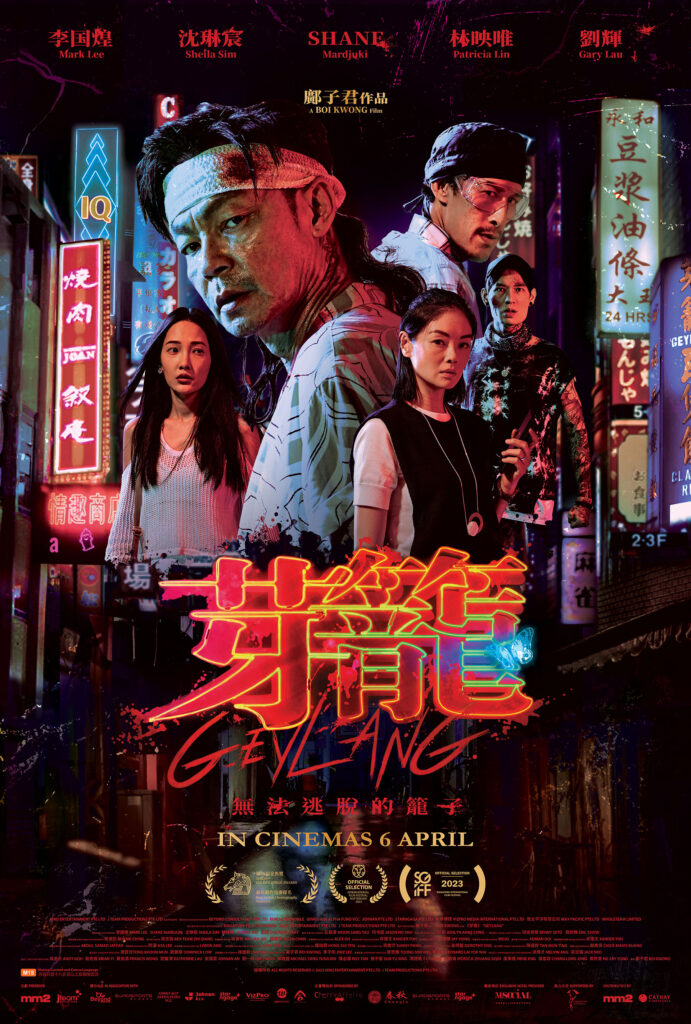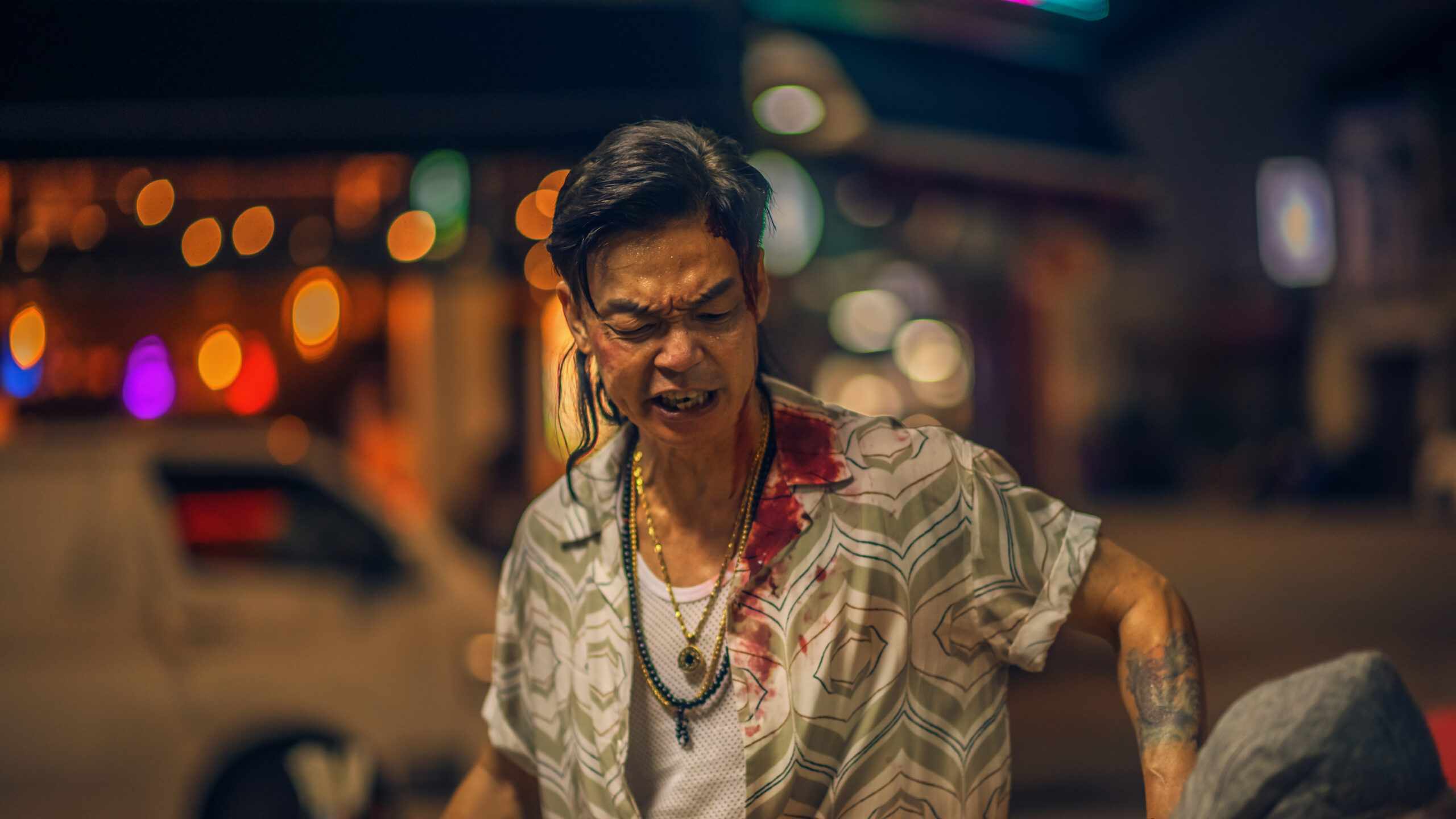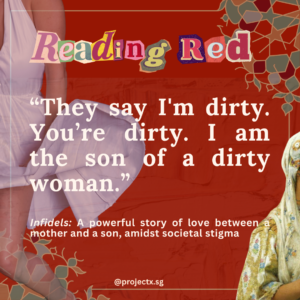
Trigger Warning: Violence, R*pe
GEYLANG is a Singaporean film, produced and directed by Boi Kwong. The film features a star-studded ensemble with the likes of Sheila Sim, Mark Lee, Shane Mardjuki, Patricia Lin, and Gary Lau. This film also features a cameo appearance by Project X’s Sherry Sherqueshaa, our beloved Head of Community Relations and Engagement.
A Neo-Noir crime thriller with lust, shame, passion, lies and violence – the lives of five individuals intertwine in an unyielding web under the red lights of GEYLANG. A desperate doctor searches for an organ for his daughter, a tormented sex worker supporting her sick dad, a pro-no lawyer with political inclinations willing to cross the line, and a ruthless pimp with a dark secret. Nothing is quite what it seems as a long night awaits inside the underbelly of an otherwise pristine city-state of Singapore.
GEYLANG isn’t the first film set in Singapore, that is inspired by the red-light district and sex work as an occupation – it walks in the tradition of films like Bugis Street, Mee Pok Man, Pleasure Factory and more recently A Yellow Bird. With films revolving around sex work, one may wonder how much of it is reel and exaggerated vs the real possibility of such scenarios. Often, films opt to sensationalise sex work in a glamorous light. Sex workers are portrayed as either victims or perpetrators of crime. GEYLANG reimagines the red-light district through the violence and grit of the neo-noir crime genre.
What We Liked

Did you know that the GEYLANG team consulted Project X for the film? If you’ve caught the film, you might have noticed some parallels as they have taken inspiration from the work that we’ve been doing. Lead actress Sheila shared that she learned a lot about Geylang and the sex industry during this production. Despite the prevalence of stereotypes surrounding sex workers, she felt that their stories and the stigma they face are not spoken about enough. Through the production, Sheila had the experience of seeing first hand. We appreciate the effort the cast and crew took to better understand the environment they wanted to depict.
The film does a brilliant job of capturing its namesake through its cinematic portrayal of the district’s neon lights. It also reinforces a unique aural experience through the multicultural street lingo used. For those who’ve never been to Geylang, the film’s portrayal of violence in its streets might be intimidating. While this might have been the case at some point in time, these days Geylang Road can be considered rather peaceful and safe enough for one to walk around to look for something to eat for dinner.

SPOILER ALERT:
Mark Lee plays Fatty, an “ah beng” brothel owner deep in debt. While this might have been an unexpected role for him to play, Mark’s character brought about a sense of lightheartedness amidst the gloom and violence in the film. Having him take care of a father with dementia, allowed Fatty’s soft side to shine, adding dimension to his otherwise ‘bad’ character.

Taiwanese actress Patricia Lin plays Shangri-La, a migrant sex worker. She bears the responsibility of supporting her sick father who is hospitalised. When asked about her work, she tells him that she has already been promoted to manager, not wanting to disclose the nature of her work. This conversation between the two of them reveals a realistic portrayal of the self-internalisation of the stigma sex workers face. The treatment of Shangri-La’s character humanises sex workers and the various reasons one might go into sex work.
Our Hopes for the Future of Sex Work Narratives in Film
The steps taken by the GEYLANG team to consult Project X as well as the involvement of sex workers on-screen with clear representation of brothels in the district, are steps towards a direction that we welcome. This allows the people whose livelihood is dependent on the red light district to have a sense of ownership through the film. While the characters in the film are fictional, one can most likely find its real-life counterpart.

Considering the work that we do – it is worth being critical of the ways that violence is experienced by sex workers in real life, and how it is also reproduced in the film. While it is characteristic for film plots in the neo-noir genre to be motivated by violence, the death of sex workers on-screen does leave behind a bitter aftertaste considering that the general population is already desensitised to the ongoing injustices they face. We also felt that the on-screen portrayal of rape could have been handled more sensitively.
Through Sherry’s cameo appearance in the film, we managed to see firsthand how she has activated an entire community to see someone like themselves on the big screen. Amidst the grit and violence associated with Geylang, the red light district also offers plenty of other narratives – autonomy, community, and sisterhood to name a few.

GEYLANG is not the first film to draw inspiration from Singapore’s red-light districts and surely won’t be the last as long as red-light districts exist. As sex workers and persons who live and work in the red-light districts become more involved in their own narratives, we can’t help but wonder about the possibilities of what a sex-worker-led film can look like!
If you have an appetite for action, do check out the film in the cinemas while you still can! The film has been nominated for the FIPRESCI Prize and the Best Action Choreography Award at the 59th Golden Horse Awards. The action sequences are guaranteed to keep you at the edge of your seat!






